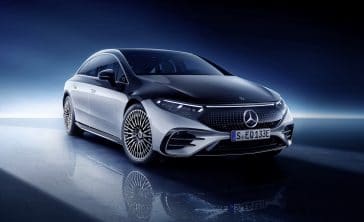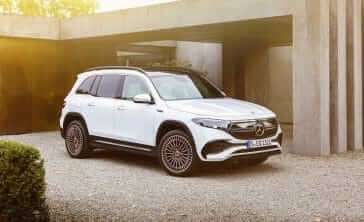Model review
In 2000, Mercedes launched a C-Class Sports Coupe as a coupe-hatchback. The Sports Coupe was a good seller for the brand, so when a new C-Class was released in 2007, it decided to spin off its success with a new car called the CLC.
While the new C-Class was a big step forward from the old model, unfortunately the same could not be said about the CLC, which barely looked any different from the old model and had failed to move forward significantly in terms of design or technology. Many at the time commented it was essentially a facelifted version of the old model, with little more than revised lights and engines.
While it was a bit of a sales flop, it was the cheapest Mercedes coupe in the range and helped to introduce many new buyers to the brand, many of them upgrading to better Mercedes’ once the time came to change.
Value for Money
While it may have been the cheapest Mercedes when new, that is not to say it was good value when new. With a starting price of just under £20,000, it was attractively priced for many buyers, although sub-par materials and design didn’t equal good value.
Although, the CLC is a well equipped car as Mercedes was generous on this front, with 16-inch wheels, automatic headlights, climate control and electric mirrors all featuring as standard.
However, now that the CLC is eight-years old, it needs to be viewed as value for money on the used market. Low mileage and well-looked after cars can be picked up for under £5,000, which makes for good value. Furthermore, because the CLC was hardly changed in its three years of production, it does not really make any difference to the car if you choose a 2008 or a 2011 car. We’d recommend going for a CLC220 CDI Sport, that provides the best mix between performance and fuel economy. We saw a 2010 car for sale with just under 60,000 miles for sale for £6,300 which seemed like a great buy.
Looks and image
Because there is little difference between the CLC and C-Class Sports Coupe from the early 2000s, the image you get from the CLC isn’t a modern one. Because the CLC was a mere facelift of the previous car, but trying to be branded as an ‘all-new’ car, it was plagued from the start. Thirsty and largely unchanged engines didn’t help the situation either.
Another problem with the CLC is that Mercedes fitted underpowered engines into what it quite a large car. 120bhp (CLC200 CDI) was just not enough in a car of this size, although the 148bhp 2.1-litre CLC220 CDI does drive well and has a good amount of performance.
However, ultimately the CLC is not about performance, it’s about comfort, where it excels. The CLC rides well too, and is able to soaks up bumps in the road well, although the diesel engines are remarkably loud for such a prestige car.
Space and practicality
While boot space is limited because the CLC is a three-door coupe, it is not too bad. It has 310 litres of room, and the rear seats also fold – something other coupes don’t have the function of doing – meaning it has a big 1,100 litres of boot space once they are folded.
The rear seats are also not too difficult to access, although if you are going to have people in the rear seats regularly, you may want to consider whether the normal four-door C-Class makes more sense because of its extra practicality. Although, leg and headroom is still quite impressive.
While the CLC was never actually tested by Euro NCAP, it is still quite a safe car. While it came out at a time when autonomous driver aids were yet to be implemented into cars, it still has six airbags, traction control as well as Isofix child mean mountings, meaning it can be family friendly if you are prepared to always be sliding the seat backwards and forwards to let children out.
Engines
Mercedes offered a range of engines in its CLC. These included the option of five petrol engines and two diesels.
The petrol options came in the guise of the CLC160 (120bhp), CLC180 (141bhp), CLC200 (181bhp), CLC230 (201bhp) and the CLC350 (268bhp). The CLC160 only had a 1.6-litre engine and was completely underpowered so is best avoided. At the top end of the range was the CLC230 and CLC350, that had 2.5-litre and 3.5-litre six-cylinder engines respectively. These variants are rare though, and therefore hard to find, while also having abysmal fuel consumption and emissions. The middle-of-the-range CLC 180 and CLC 200 definitely are the best options if you are wanting a petrol version.
As for the diesels, there are only two, the CLC200 CDI and CLC220 CDI, that have 120bhp and 148bhp. The CL200 is underpowered, having only 120bhp, although offers much better fuel economy than the more powerful CLC220 CDI.
Running Costs
Because of the age of the CLCs engines, unfortunately none of them return particularly impressive fuel economy, especially when compared to cars such as the BMW 1-Series Coupe and Audi A3. No particular engines even stand out as being particularly efficient, because even the CLC 200 CDI still only returns 50.4mpg. The petrol engines are even worse on fuel too, so are best avoided if fuel efficiency is what you’re after.
Insurance groups are high too, ranging from 29 to 36 which is high for a car that offers (largely) quite disappointing performance.
Things to look out for
There are a few common problems with the CLC that you should be particularly aware of.
The poor quality of some Mercedes’ of this era unfortunately made its way into the CLC, which has been known to develop irritating rattles after several years. The alloy wheels are also known to corrode, particularly if they have been kerbed, so make sure to look out for this if you are looking at buying one. Also, the third brake light is made up of a long strip of LEDs that run between the rear window and boot lid, and are known to fail, which can be costly and expensive to replace. As with any car, you should look out for good maintenance and service history, but with something like a Mercedes it is particularly important because repairs can be costly.
Rivals
Unsurprisingly, most of the CLC’s rivals come from Germany, including those from Audi and BMW. A three-door Audi A3 and TT, as well as the BMW 1-Series 3dr or BMW 1-Series Coupe all make good options and are good value on the used market – in reality they are probably a better bet than the CLC is. Slightly less conventional rivals include the Volkswagen Scirocco and the Volvo C30, the latter being quite a wildcard.
Depreciation
The CLC definitely makes a good option on the used market, as they start at less than £4,000, albeit for one with high miles. While the underpowered CLC160 and CLC200CDI are slightly cheaper, their poor performance isn’t worth the money you save. A CLC180 Kompressor with around 70,000 miles can be picked up for just under £5,000, which represents excellent value for money. If diesel is your tipple, the CLC220 CDI should be the one to go for. We saw a 2010 model in Sport specification for sale at £5,495. In short, the CLC makes a far better option used than it ever did when new.





